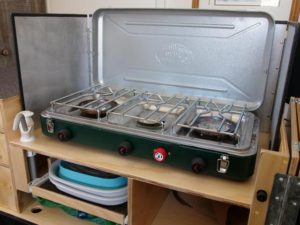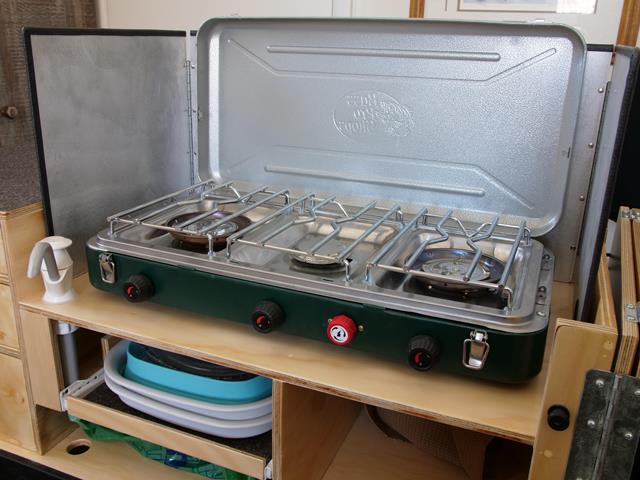One of the key Overlanding kitchen components is having a highly functional stove cooktop.
Reliability vs frustration or failures in key functional areas of a camp cooktop can significantly impact an important part of the Overlanding experience, your meal preparations.
Overlooked are the importance of the following criteria for your expedition requirements. There are many choices to be considered with some stoves being stellar overall yet still lacking in key some key functional areas.
– numbers of burners needed 2-3 or 4
– BTU power of burners 8k to 25k (that’s a big difference)
– overall wind screen protection fuel efficiency and keeping it lit!!
– burner ignition system
– burner adjustability and simmer control
– fuel types – connection points, method, and regulator
– portability and build
Each of these contribute to the user experience and real world functionality of the unit.
Many times discounted store brand units can be easily modified into “rock solid” highly functional stoves. Prices vary greatly and sometimes you can save a bundle and improve on an inexpensive foundation with little cost modifications.

Making the following modifications significantly improve the function service life and usability of the abuse most Overlander stoves will see.
Simple modifications to undertake.
– Loctite all fasteners to minimize maintenance issues
– steel epoxy all pot-metal tacks, rivets, and solder joints
– validate and adjust ignition system silicone secure all connections and apply electrical lubricant to the switch
– high temp 500 F or greater Silicone to the base of stove grates to fasten and prevent rattles and wear
– modify side windscreens to increase wind block coverage as most stoves do not provide sufficient coverage
– replace fuel connections from a solid brass line small cartridge next to stove to a flexible hose with quick disconnects to a remote larger fuel source that regains lost space next to the stove
– Addition of a small LED light strip with a quick disconnect to a remote battery on the inside top of the stove lid for evening cooking.
